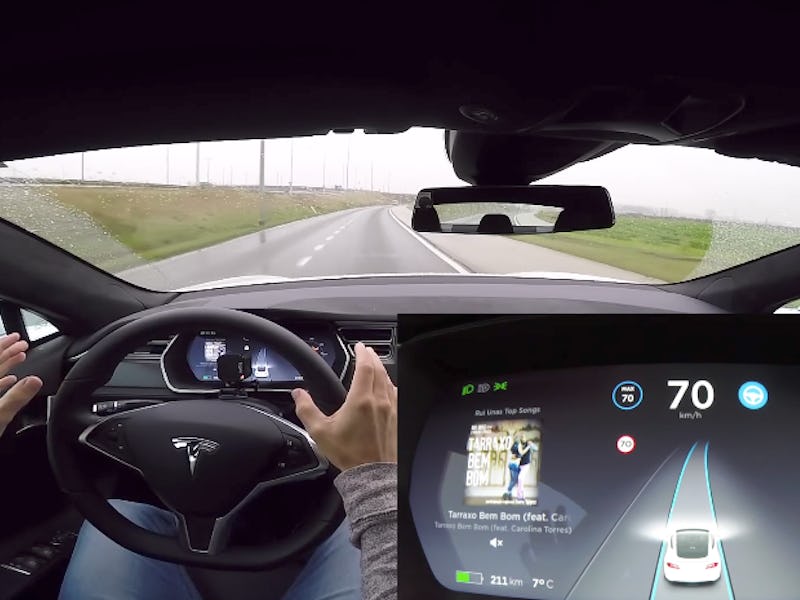
Elon Musk is getting Tesla fans a chance to try out Autopilot. The CEO revealed at the company’s annual shareholder meeting on Tuesday at the Computer History Museum in Mountain View, California, that the feature will debut in a limited trial format very soon.
“Hopefully next month, [we will] offer a free trial for people to try out Autopilot and see how well it works,” Musk said. “We’re also making rapid progress on Autopilot technology, so there’s a new version of Autopilot that’s rolling out this week, which I think is quite a significant improvement. The reliability and capability of Autopilot will increase exponentially over the next six to 12 months. It’s really, the improvements are very, very rapid.”
While finer details are scarce, it seems Tesla is considering letting users try out the feature ahead of the rollout of full autonomy later this year.
What Is Autopilot?
“Autopilot” is the brand name applied to a number of systems that, in its most basic terms, lets a computer drive the car. Right now, that means the user maintaining full alertness as the computer follows a highway or drives in other limited applications, with no option to follow a route or complete any complex journeys. This ranks around “level two” on the Society of Automotive Engineers’ ranking of autonomous cars — one level above cruise control, but three levels below the “level five” holy grail of a car that requires no human input.
Tesla describes the current system as offering the current capabilities:
Your Tesla will match speed to traffic conditions, keep within a lane, automatically change lanes without requiring driver input, transition from one freeway to another, exit the freeway when your destination is near, self-park when near a parking spot and be summoned to and from your garage.
The feature originally debuted in October 2014, powered by a Mobileye-developed system. Tesla and Mobileye parted ways in 2016, and in October of that year, Tesla announced a new system developed in-house. The new system is powered by an Nvidia Drive PX 2 computer, and Tesla has been gradually adding new features through over-the-air software updates to match and gradually exceed the capabilities of the previous Mobileye system.
Autopilot Vs. Full Self-Driving
Tesla’s goal with the new system is to eventually reach those higher levels of autonomy, either through software updates alone or a computer upgrade. The company claims every car after October 2016 ships with the necessary combination of eight cameras, GPS, radar and ultrasonic sensors to enable full autonomy.
The company describes full autonomy working like this:
All you will need to do is get in and tell your car where to go. If you don’t say anything, the car will look at your calendar and take you there as the assumed destination or just home if nothing is on the calendar. Your Tesla will figure out the optimal route, navigate urban streets (even without lane markings), manage complex intersections with traffic lights, stop signs and roundabouts, and handle densely packed freeways with cars moving at high speed. When you arrive at your destination, simply step out at the entrance and your car will enter park seek mode, automatically search for a spot and park itself. A tap on your phone summons it back to you.
Tesla buyers can pay upfront to unlock the existing Autopilot features, and pre-order the full autonomy features assuming the driver has also purchased the Autopilot unlock. The current Autopilot unlock costs $5,000 when purchased with the car or $6,000 after, while full self-driving costs $3,000 if purchased with the car and is expected to cost $5,000 if bought after when the feature launches — but because you need the first Autopilot unlock to buy the full autonomy unlock, in practice that means full autonomy will likely cost between $8,000 and $11,000 depending on the circumstances.
While Autopilot is available now, it’s unclear when full autonomy will debut — Tesla originally promised coast-to-coast autonomous driving by the end of 2017, but the feature is now expected to debut this year.